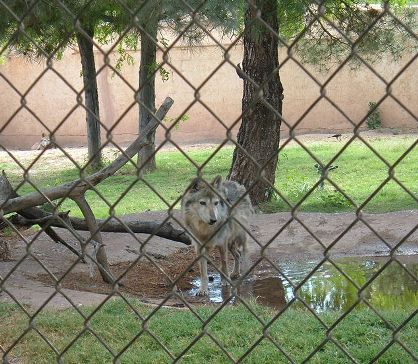13
Feb
Press Release: Stone Zoo Participates in Vital Conservation Efforts for Mexican Gray Wolves

Visitors to Stone Zoo will notice several new faces with the addition of five Mexican gray wolves who recently made their exhibit debut. The five new male wolves, all brothers, can be seen in Stone Zoo’s expansive Mexican gray wolf exhibit.
Zoo New England, in a unique partnership between the U.S. Fish and Wildlife Service, state agencies, several zoos accredited by the Association of Zoos and Aquariums and other partners, participates in a reintroduction program to release captive-reared Mexican wolves in remote parts of Arizona, New Mexico and the country of Mexico.
Since 1998, Zoo New England has participated in the Mexican Wolf Species Survival Plan (SSP). The SSP is a consortium of institutions working together to breed captive Mexican wolves for reintroduction and recovery in the Southwest.
“It is our great hope that someday the descendants of Mexican gray wolves that were either born or cared for at Stone Zoo will be successfully reintroduced into the wild,” said John Linehan, Zoo New England President and CEO, who added, “Zoo New England is committed to the conservation of this incredible species and is proud of the role we have played in ensuring that these animals have a continued chance of survival in the wild.”
Following the recommendation of the Mexican Gray Wolf SSP, in late 2011 two wolves born at Stone Zoo were relocated to facilities in Mexico. In 2012, the remaining two wolves at Stone Zoo were transferred to the Oklahoma City Zoo and Botanical Garden, which in exchange sent the five new male wolves to Stone Zoo. Careful planning and coordination, often requiring months of work, is required amongst institutions to successfully manage all of the transactions and the wolves’ successful adjustments to their new homes.
Once common throughout western Texas, southern New Mexico, central Arizona and northern Mexico, the Mexican gray wolf, the rarest and most genetically distinct subspecies of the North American gray wolf, was completely eliminated from the wild, surviving in only small captive populations. Throughout the past several decades, great strides have been made in procuring a brighter future for these wolves including the reintroduction of these animals into the wild.
In captivity, close bonds between wolves and keepers are avoided because of the reintroduction program. Ultimately, the wolves’ survival depends on active avoidance of human contact. The animals cannot become reliant on people for food. While in captivity, the wolves do not lose their natural instincts, but hunting skills need to be honed before being released into the wild. Wolves that are slated for release are sent to large pre-release centers with some level of native prey. Typically, these wolves and their offspring are released into the wild together as a pack.
In 1976, the Mexican gray wolf, or lobo, was listed as endangered under the Endangered Species Act. The Mexican wolf recovery team was formed, and, as required, a conservation and survival plan was established in 1979. Today, there are approximately 50-60 Mexican gray wolves in Arizona and New Mexico, and 270 in captive breeding facilities in the United States and Mexico.
Mexican gray wolves weigh between 50 and 80 pounds and are about 5-feet long with a relatively large head. The coat is often mottled or patchy and varies from gray and black to brown and buff. Mexican gray wolves have complex social behavior, which includes living in tightly organized packs and communicating through howling vocalizations, body posturing and scent marking. These animals work effectively together to adapt to most environments where there is prey, which includes deer, jackrabbit, mice and peccary.
###
Stone Zoo, New England
Brianne Barrett
617-375-9700



